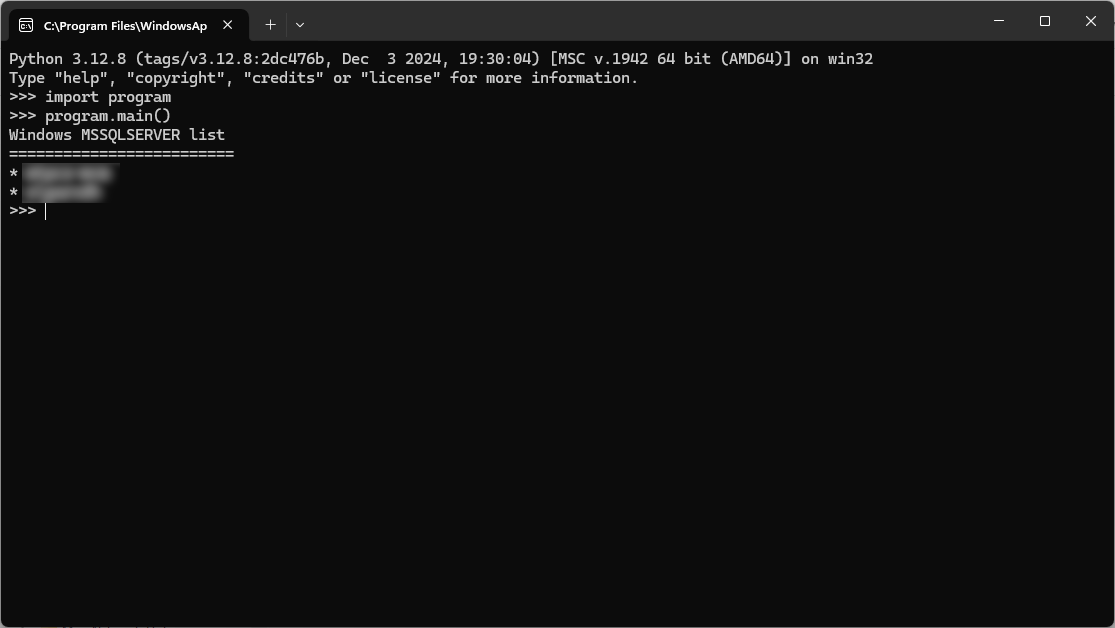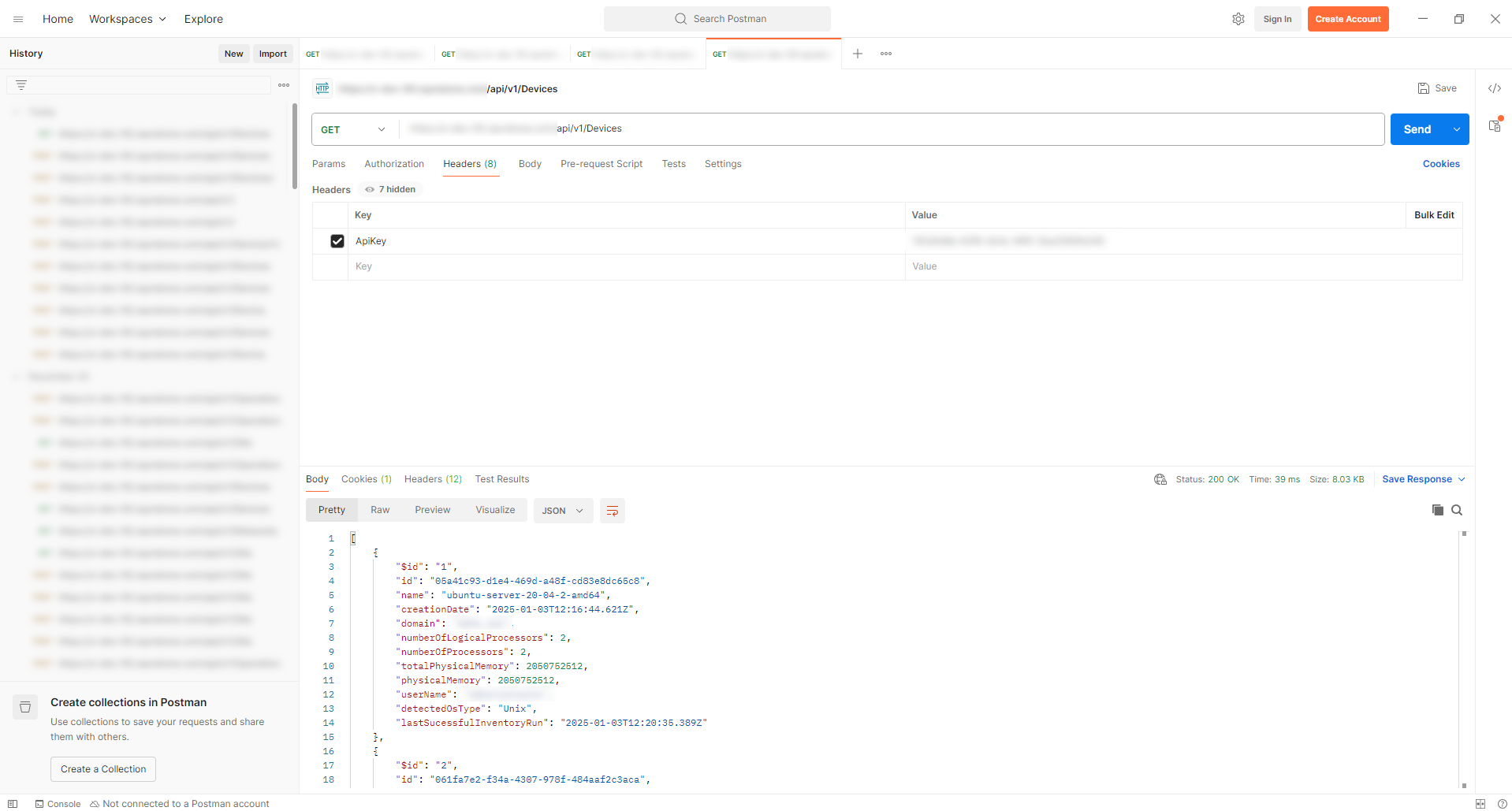The Raynet One API is a REST-based HTTP data request interface. It is versioned. Valid credentials are required to use it. The credentials consist of an API key tied to the providing user's authentication role. Rate limits apply for computation and bandwidth load protection (max items per request is 1000).
Atomicity is not discussed here.

Running the Windows SQL server use-case sample program through Python on the Windows platform. It lists all known hostnames on which the MSSQLSERVER service was found. Since this Microsoft database solution is quite popular, this list is valuable to IT network administration.

Use of the publicly-available Postman tool to try out the API. Consider using it to check out individual endpoints for quick & dirty checks, consolidating your vision of the various available endpoints.
Required HTTP headers
•ApiKey: secret character sequence provided by a user; actions performed through API are commissioned by said user.
Supported HTTP verbs
•GET: used for non-modifying data retrieval requests
•POST: used for operations to add objects or trigger jobs
•DELETE: used specifically for object deletion requests
Request and response body format
To prevent overloading as part of requests, every API endpoint returning a list of objects is rate-limited. Imagine the retrieval in fixed-size small pages instead of a very long paper of all entries. Metaphorically speaking, bouncing this endlessly long sheet of paper through the room would cause quite a mess.
Objects are ordered by their key to mark their incremental index of retrieval, their position in the sorted list. The object list endpoints accept a parameter called lastId to exclude all entries ordered equivalent or prior to it.
Use-case based introduction
In the following sub-chapters, you can learn and practice the API first-hand. They show advanced information collection from multiple endpoints to compute targeted rich displays.
Maintaining scripts inside of your IT landscape
After reading the program samples as shown in the promoted use-cases, you should realize the necessity of keeping referential details of objects in sync between the web interface and the deployed programs/scripts. Not doing so will lead to execution failures. The severity and transparency of script execution failure depends on your IT landscape's error management strategy.
Remember to coordinate changes in the Raynet One objects and structure with the script maintainers. Doing so will mitigate the risk of execution failure.
Use of suggested technology as part of the use-cases
The technology selected in the use-cases can be substituted by other compatible solutions. The most prominent examples for substitution are Python or the web-requests library as part of Python. Using a different product implies change in the related program operations or further software dependencies.
Complete technical API description
Visit the official Raynet One GitHub repository. View the swagger.json file to see all available endpoints and the JSON parameter layouts used during communication.